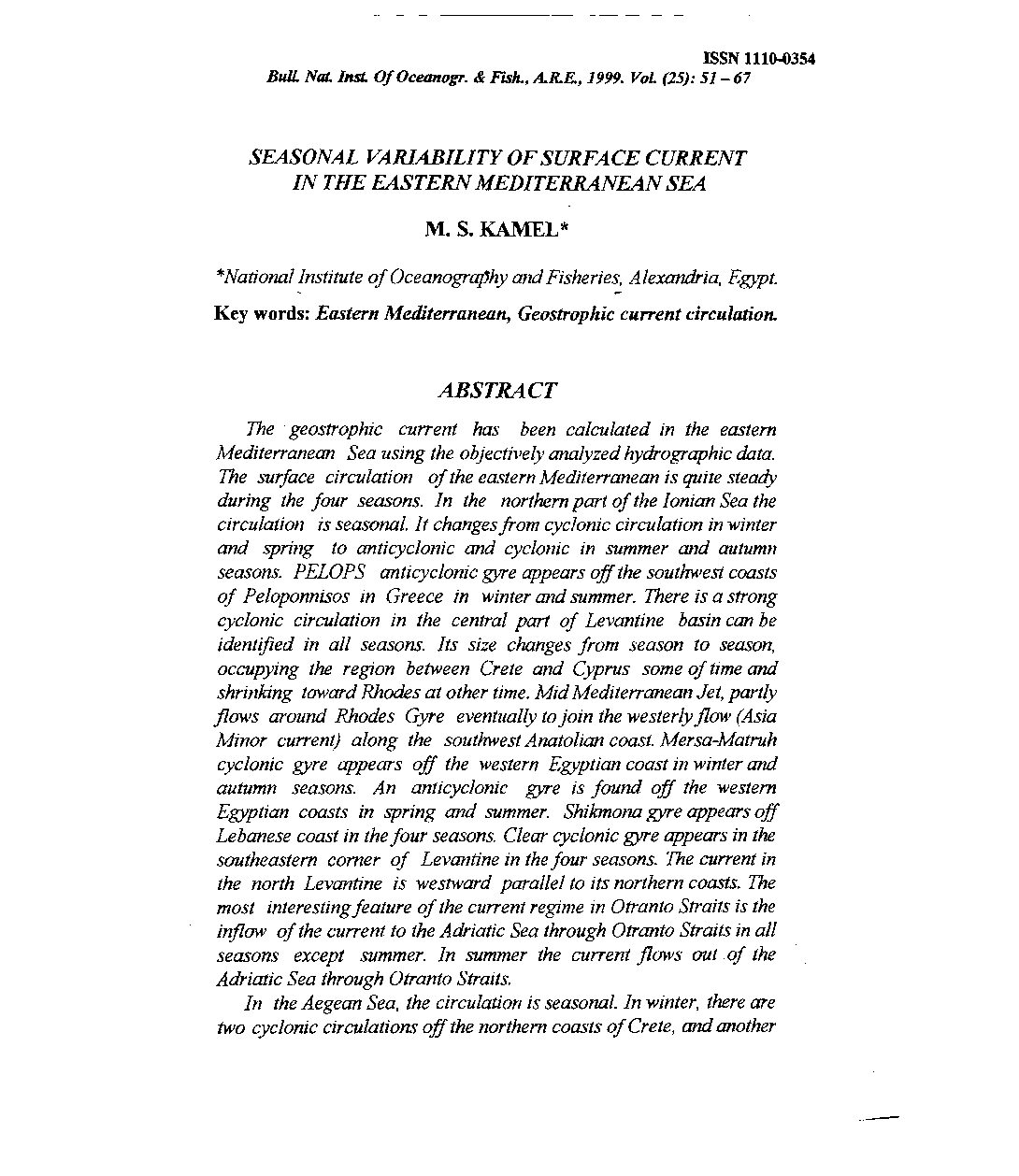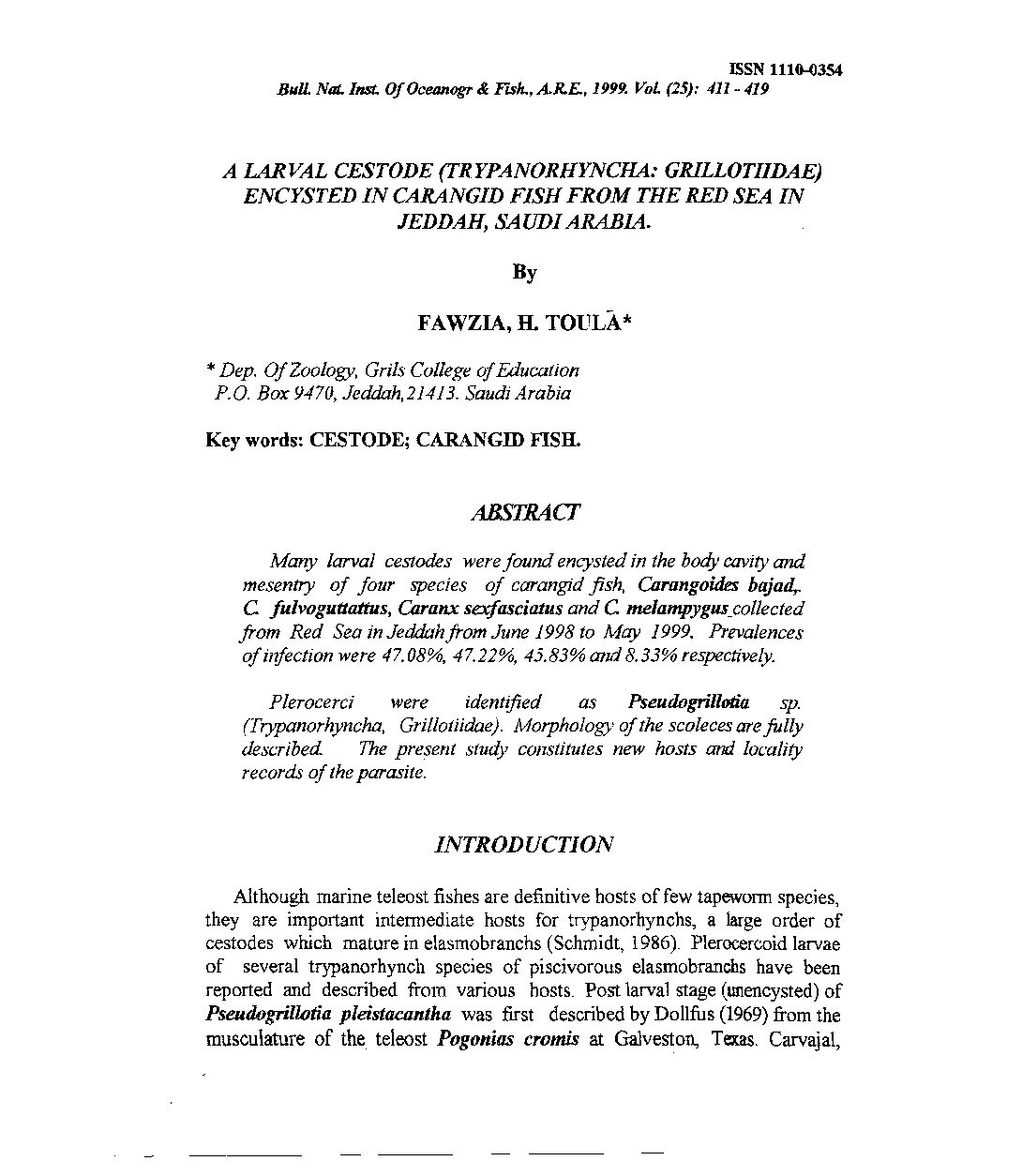Categories
vol-25SEASONAL VARIABILITY OF SURFACE CURRENT
IN THE EASTERN MEDITERRANEAN SEA
M. S.KAMEL*
*NationalInstitute ofOceanograjJhy andFisheries, Alexandria, Egypt.
Key words: Eastern Medite”anean, Geostrophic current circulation.
ABSTRACT
The geostrophic current has been calculated in the eastern
Mediterranean Sea using the objectively analyzed hydrographic data.
The surface circulation ofthe eastern Mediterranean is quite steady
during the four seasons. In the northern part ofthe Ionian Sea the
circulation is seasonal. It changesfrom cyclonic circulation in winter
and spring to anticyclonic and cyclonic in summer and autumn
seasons. PELOPS anticyclonic gyre appears offthe southwest coasts
of Peloponnisos in Greece in winter and summer. There is a strong
cyclonic circulation in the central part of Levantine basin can be
identified in all seasons. Its size changes from season to season,
occupying the region between Crete and Cyprus some oftime and
shrinking toward Rhodes at other time. Mid Mediterranean Jet, partly
flows around Rhodes Gyre eventually to join the westerlyflow (Asia
Minor current) along the southwest Anatolian coast. Mersa-Matruh
cyclonic gyre appears off the western Egyptian coast in winter and
autumn seasons. An anticyclonic gyre is found off the western
Egyptian coasts in spring and summer. Shikmona gyre appears off
Lebanese coast in the four seasons. Clear cyclonic gyre appears in the
southeastern comer of Levantine in the four seasons. The current in
the north Levantine is westward parallel to its northern coasts. The
most interestingfeature ofthe current regime in Otranto Straits is the
inflow ofthe current to the Adriatic Sea through Otranto Straits in all
seasons except summer. In summer the current flows out of the
Adriatic Sea through Otranto Straits.
In the Aegean Sea, the circulation is seasonal. In winter, there are
two cyclonic circulations offthe northern coasts ofCrete, andanother







